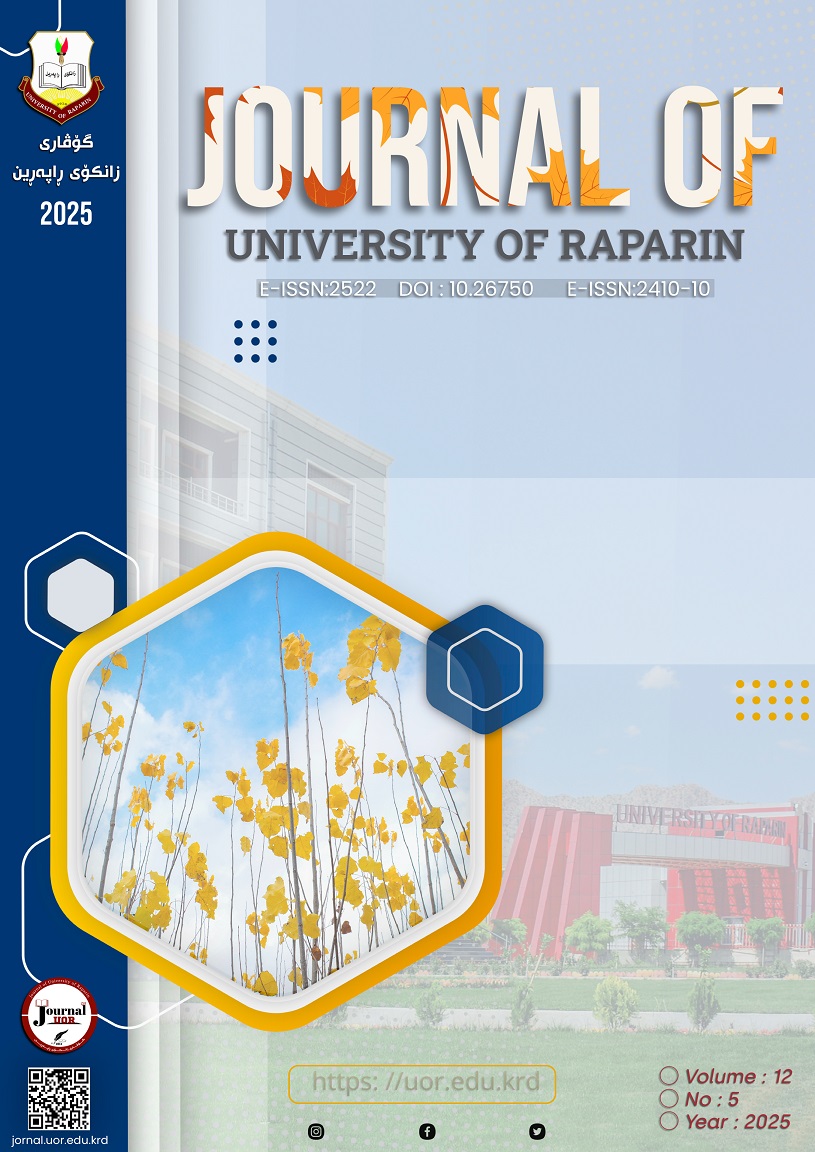Abstract
This study aims to analyze marriage ceremonies in Chamchamal township. The study highlights the social, cultural, and current changes in the ceremony. The importance of the study is shown by the fact that Chamchamal is a local community and wedding ceremonies and types have not been conducted an anthropological study according to the researchers. The purpose of this study; It sheds light on the marriage ceremony and identifies and presents the methods and types of marriage in Chamchamal. Also highlighting the changes that have happened to the ceremony today. The method used in this study is anthropological method. The researchers tried to understand the meaning, symbols and signs of how marriage is conducted in Chamchamal. (5) women and (6) men were used as samples to obtain information. To obtain more information, use was made of (participation and direct observation, documents, data and information, use of photography and audio recording and notebook record). The study concluded that ordinary marriage is the most common form in Chamchamal, while types such as wife-to-wife, adult-to-child and blood revenge existed only in the kind of old history of the region and are now gone. However, the form of wedding ceremonies has changed with social and cultural changes. The new generation of Chamchamal has been influenced by global and local changes. Unlike in the past, when parents played a major role in choosing a spouse, the majority of young people now choose their own spouses. Khanabandan still continues,and Pashtelana (weekly) ceremony has retained its importance, with special gifts or money being taken to the couple according to the means of the family.
References
ايزارواخرون، بيار بونت و ميشال (2011) معجم الاثنولوجيا والانثروبولوجيا، ترجمة مصباح الصمد، المؤسسة الجامعية للدراسات والنشر، طبعة الثانية، لبنان، بيروت.
النوري، د. قيس(1982) المدخل الى علم ألانسان، الطبعة الاولى، بغداد، العراق.
العثمان، د.وسام(2002) المدخل الى الانتروبولوجيا، الأهالي للطباعة والنشر والتوزيع، الطبعة الاولى، دمشق، سورية.
الجنابي، عائدة سالم محمد(1983) المتغيرات الاجتماعية والثقافية لظاهرة الطلاق، مع دراسة ميدانية لظاهرة الطلاق في مدينة بغداد، وزارة الثقافة والاعلام دائرة الشؤون الثقافية والنشر، دار الحرية للطباعة، بغداد.
ئەمین، نەوشیروان مستەفا(2015) بەدەم ڕێگاوه گوڵچنین و چەند بابەتیکی کۆمەناسی، کتێبی یەکەم، بەرگی دوەم الدار العربية للعلوم ناشرون، لبنان.
ئەنجومەنی دادوەری، سەرۆکایەتی دادگای تێهەڵچونەوەی ناوچەی سلێمانی، دادگای باری کەسی چەمچەماڵ، ئاماری هاوسەرگیریی و فرەژنی ساڵانی (2019-2024) زانیاری بڵاونەکراوە.
د.خەلیل، عومەر(2007) کۆمەڵناسی خێزان، وەگێڕانی ئارام ئەمین شوانی، دەزگای تویژینەوەو بڵاوکردنەوەی موکریانی، چاپی یەکەم، چاپخانەی خانی، دھۆک.
خصباك ،شاكر (1972) الأكراد دراسة جغرافية اثنوغرافية، مطبعة شفيق، طبعة 1، بغداد.
خەلیقی، د.حوسێنی(1992)کۆمەڵناسی کوردەواری، بەرگی دوەم، چاپخانەی الحوادث، بغداد.
حکومەتی هەرێمی کوردستان، ئەنجومونی وەزیران، ڕۆژنامەی وەقایعی کوردستان ژمارە (95) لە (30/12/2008 ).
سلیم، د.شاكر مصطفی(1981)، قاموس الانتروبولوجیا، انكليزي- عربي، الطبعە الاولی، الكویت.
سعدی، ئالان صلاح (2022) ناحیەی تەق تەق توێژینەوەیەکی ئەنترۆپۆلۆژییە، تێزی دکتۆرا، بڵاونەکراوە، بەشی کۆمەڵناسی، کۆلێژی ئاداب، زانکۆی سەلاحەدین- هەولێر.
سندی، پرۆفیسۆر بەدرخان (2008) کۆمەڵگای کوردی لە دیدی ڕوژهەڵاتناسیدا، وەرگێڕانی د.ئسماعیل ئیبراهیم سەعید، دەزگای مەکریانی، چاپخانەی خانی، دهۆک.
سعفان، الدكتور حسن شحاله(1966) علم الانسان (الأنثروبولوجيا) منشورات مكتبة العرفان المطبعة التجارية، بیروت.
شوانی، محمد حسێن(2017)بنچینەکانی ئەنترۆپۆلۆژیای گشتی، بەرگی یەکەم، لە بڵاوکراوەکانی کۆمەڵەی کۆمەڵناسان و دەرونناسانی کوردستان، چاپی یەکەم، هەولێر.
کۆهین، بروس(2010) سەرەتایەك بۆكۆمەڵناسی، وەرگێرانی هێمن شەریف، چاپخانەی چوارچرا چاپی یەکەم، سلێمانی.
محمد، داڕێژ وریا (2019) ڕانيە توێژینەوەیەکی مرۆڤناسیە، نامەی ماستەر بڵاونەکراوە، بەشی کۆمەڵناسی، کۆلێژی زانسته مروڤایەتیەکان، زانکۆی سلێمانی.
چاوپێکەوتنەکان:
شوکریە رضا قادر(12/3/2025) ژنی ماڵەوە.
شهلاء محمد احمد(5/4/2025) ،ڕێنمایکاری پەروەردەیی و دەرونی.
حسێن قادر ڕەحمان(29/4/2025) ،خاوەنی دوکانی خۆشنوسی و ڕازاندنەوەی ئوتۆمبێلی بوک.
خاتون علی نادر (15/3/2025) ژنی ماڵەوە.
گوڵەباخ محمد نجم(1/5/2025) ژنی ماڵەوە.
نەجات ابراهیم فتاح(29/4/2025) خاوەنی دوکانی جل وبەرگی بوکێنی و مارەبڕین و پێاویستیەکانی.
نامیق غریب حسن (10/3/2025) توێژەری کۆمەڵایەتی.
هەڵاڵە خەڵەف سعید(10/4/2025) مامۆستا.
مامۆستا نجم الدین(3/5/2025) مامۆستای ئاینی.
وشیار کریم محمد(14/3/2025) مامۆستاو خاوەنی دوکانی جوانکاری ئافرەتان.
یعقوب یاخی کاکەویس (18/6/2025) پارێزەی ڕاوێژکار لە دادگای جەمچەماڵ.

This work is licensed under a Creative Commons Attribution-NonCommercial-NoDerivatives 4.0 International License.
Copyright (c) 2025 Journal of University of Raparin

